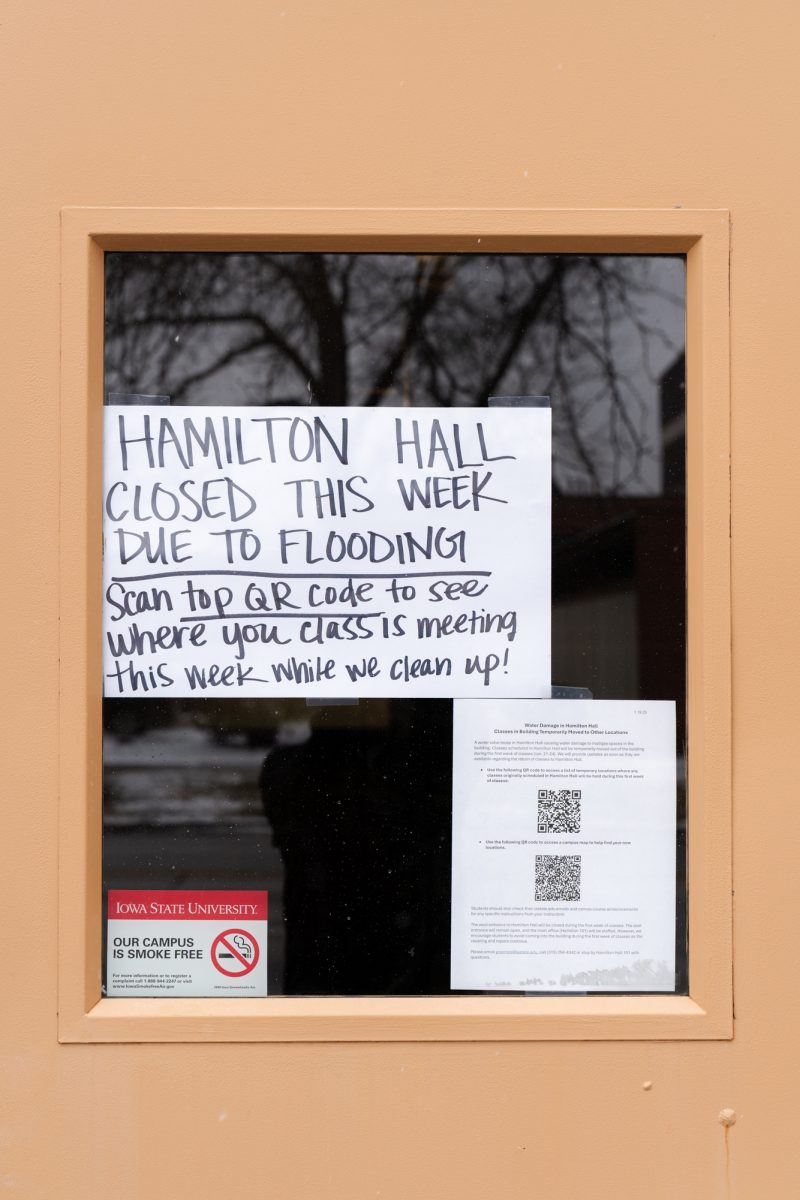Dropping in value
January 27, 2006
Responding to the rising debt of ISU graduates, administrators believe it will take effort from both students and the university to change the status quo.
“The university is definitely cognizant of the fact that students are borrowing money and are making every effort to help keep that low, but it has to be a partnership,” said Roberta Johnson, director of student financial aid.
Recently in Kiplinger’s Personal Finance, a magazine designed for consumers, attention was turned to public colleges for the upcoming February issue. The study is already online and shows Iowa State dropping from 31st in value for 2003 to 71st this year.
According to the Kiplinger’s Personal Finance study, Iowa State also has an average graduating debt of approximately $27,000.
John McCarroll, executive director of university relations, said when he first saw these numbers they were alarming, but did not tell the entire story.
“One thing about the Kiplinger’s survey that a number of us who looked at if found odd is that they don’t have any criteria for what happens when a student finishes at Iowa State or any other university,” he said. “Do they get a good job?”
McCarroll said Iowa State has always prided itself on the ability for students to get good jobs or get into good graduate schools after they finish their undergraduate degrees.
“We think the kind of jobs and careers you develop after you leave Iowa State with a degree that says ‘Iowa State University’ is very important, because ultimately that’s what students are trying to do,” he said.
When asked how the average graduating debt is found, Johnson explained that the numbers are provided by the university measuring the amount of debt accumulated by students from federal, state, institutional and private sources.
“It’s of the people who graduated with debt, usually about a third of students don’t have any kind of debt whatsoever and they don’t get counted in the denominator at all,” she said. “If they did our average debt, [the ranking] would look a lot better.”
The graduates who make up this portion of the study have seen double-digit percentage increases in tuition, and federal programs have not kept up with inflation, Johnson said.
“When that is thrown into the mix, when there is less dollarsavailable in the grant programs that leaves only two places to pick up additional funding for students,” she said.
“Students end up borrowing more through private loan programs or the university has to try and put more funds through institutional grants.”
Johnson also gave suggestions to students who are looking to reduce debt. She said students should consider taking more credits per semester in order to graduate on time or sooner, and to take advantage of the Financial Counseling Clinic to become financially literate.
“We also continue to beat the drum to encourage students to make sure they are filing the free federal application for student aid,” Johnson said.
She also stressed the importance of employment during the summer, something that is not lost on students at Iowa State and other peer universities in the Midwest.
Meghan Minner, junior in biological and pre-med illustration, and her twin brother David Minner, who attends the University of Minnesota, are from Boone. They have worked several jobs and taken out several loans while attending college.
Divided by a border but not by debt, both Meghan and David will owe money to both Iowa Student Loan and the federal government through the Ford and Stafford Loan programs.
Meghan said she could not estimate her entire debt upon graduation, but it will not be a small total after transferring from Luther College in Decorah.
“Loans have been helpful, otherwise I wouldn’t be in school,” she said.
She said she transferred mainly to join the program she majors in, but the lower tuition was also a plus. While at Iowa State she worked in the summer as a biological science aide in the Corn Insects and Crop Genetics Research Unit.
“It was a full-time summer job that helped out a lot,” Meghan said.
David said he pays an amount comparable to in-state tuition at Minnesota because they awarded him an $11,000 scholarship, but the rate is still a little higher than if he would attend Iowa State.
“I got the scholarship, but it was comparable if not a little higher than state tuition,” he said. “It did determine my decision a little because Iowa State gave me next to nothing.”
Prior to attending college and during the summer after his freshman year of college, David said he worked at the ISU Horticulture Farm and a computer lab, but that money has already been wiped out.
David now works as a community advisor, and the free room and board has eased his situation, he said.
“Normally I would be flat-broke now, but I got a rebate back from the university because of the CA position,” David explained. “If I hadn’t got that I would have asked my parents for about $600 to cover this semester.”
Even with his new position, David said with all of his loans he would owe approximately $28,000 upon graduation.






